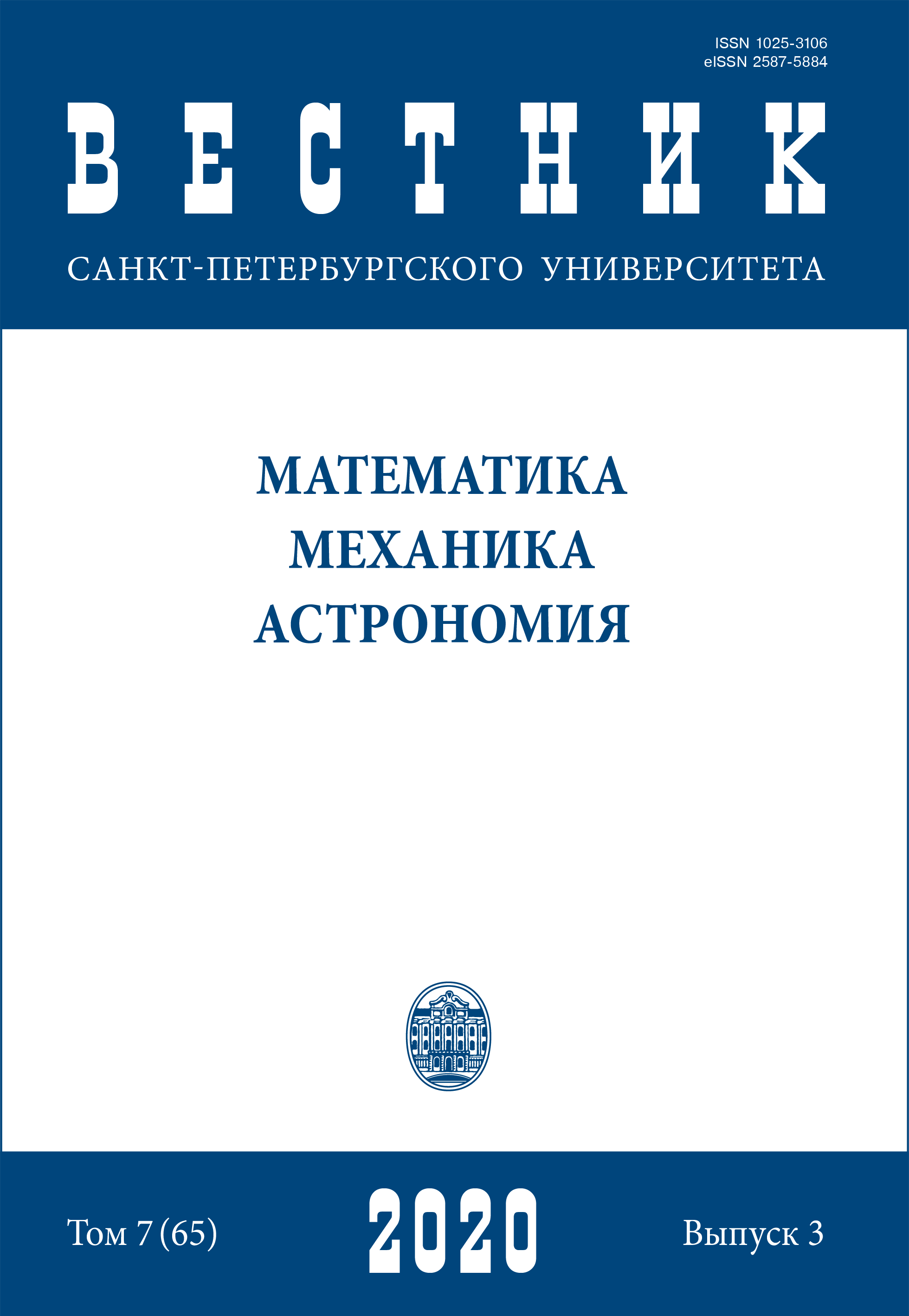Coupled vibrations of viscoelastic three-layer composite plates. 1. Formulation of problem
DOI:
https://doi.org/10.21638/spbu01.2020.309Abstract
A mathematical model of damped oscillations of three-layer plates formed by two rigid anisotropic layers and a soft middle isotropic layer of a viscoelastic polymer is proposed. Each hard layer is an anisotropic structure formed by a finite number of randomly oriented orthotropic viscoelastic composites layers. The model is based on the use of the Hamiltonian variational principle, the refined theory of first-order plates (Reissner-Mindlin theory), the model of complex modules and the principle of elastic-viscoelastic correspondence in the linear theory of viscoelasticity. When describing the physical relationships of hard layer materials, the influence of the vibration frequency and the ambient temperature is considered negligible, while for the soft layer of a viscoelastic polymer, the temperaturefrequency dependence of the elastic-dissipative characteristics is taken into account based on experimentally determined generalized curves. As a special case of the general problem, by neglecting the deformation of the middle surfaces of the rigid layers in one of the directions of the axes of the rigid layers of a three-layer plate, the equations of longitudinal and transverse damped oscillations of a globally orthotropic three-layer beam are obtained. Minimization of the Hamilton functional allows us to reduce the problem of damped vibrations of anisotropic structures to the algebraic problem of complex eigenvalues.
Downloads
References
Литература
References
Downloads
Published
How to Cite
Issue
Section
License
Articles of "Vestnik of Saint Petersburg University. Mathematics. Mechanics. Astronomy" are open access distributed under the terms of the License Agreement with Saint Petersburg State University, which permits to the authors unrestricted distribution and self-archiving free of charge.




